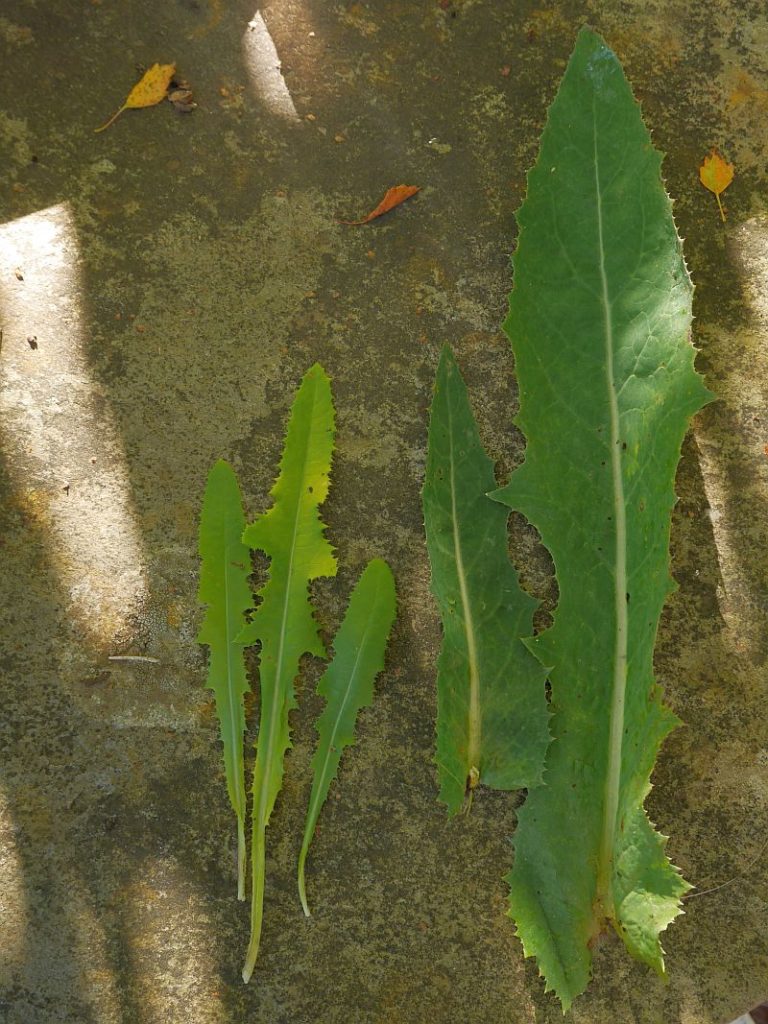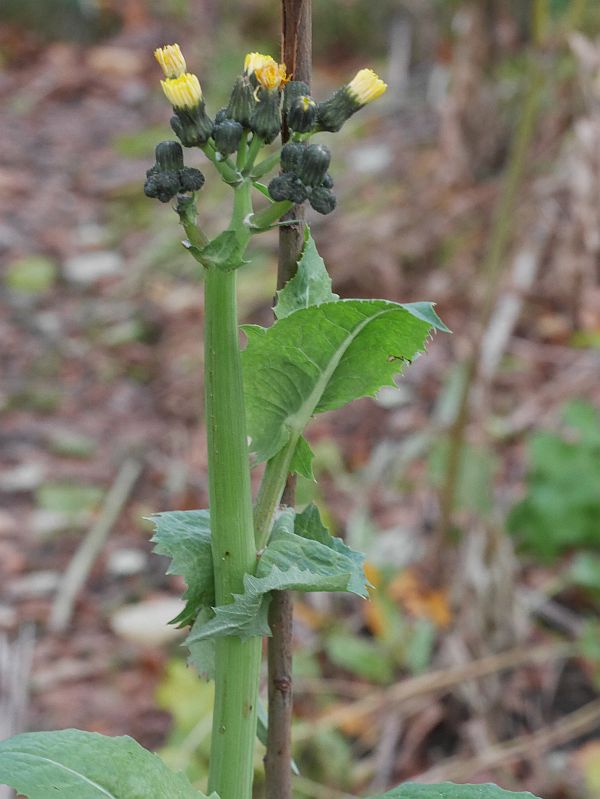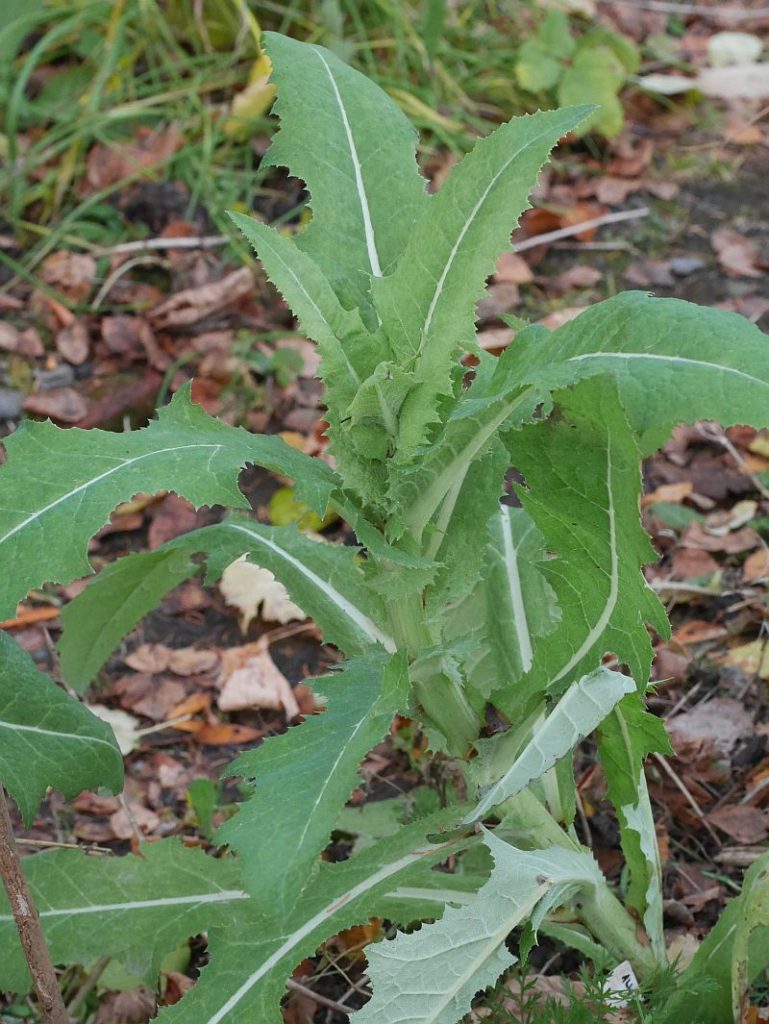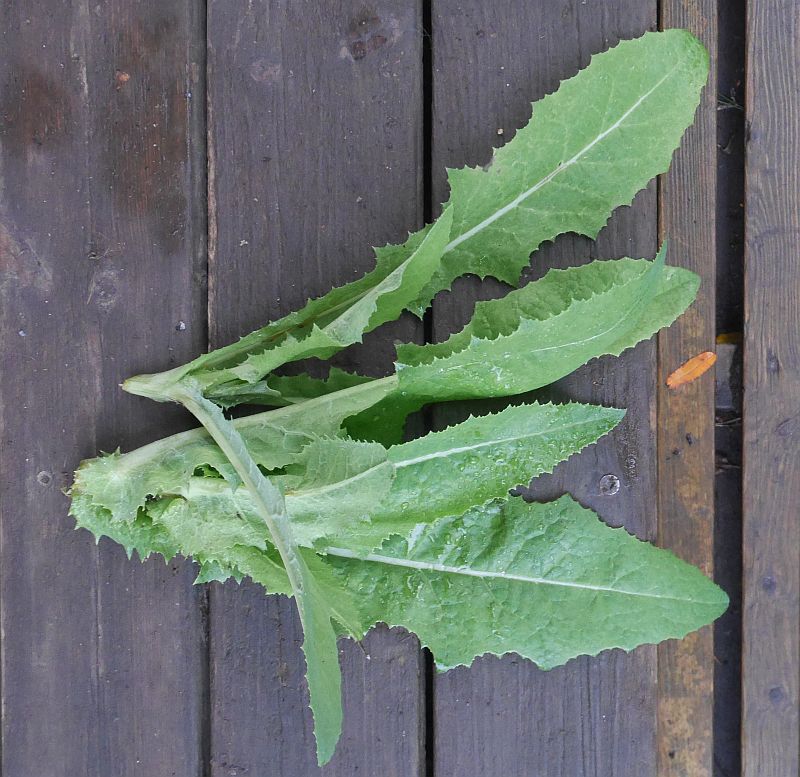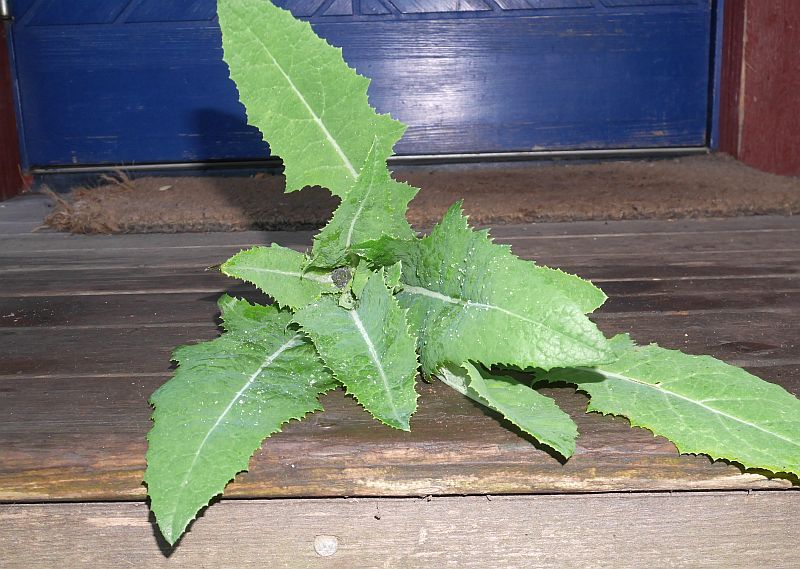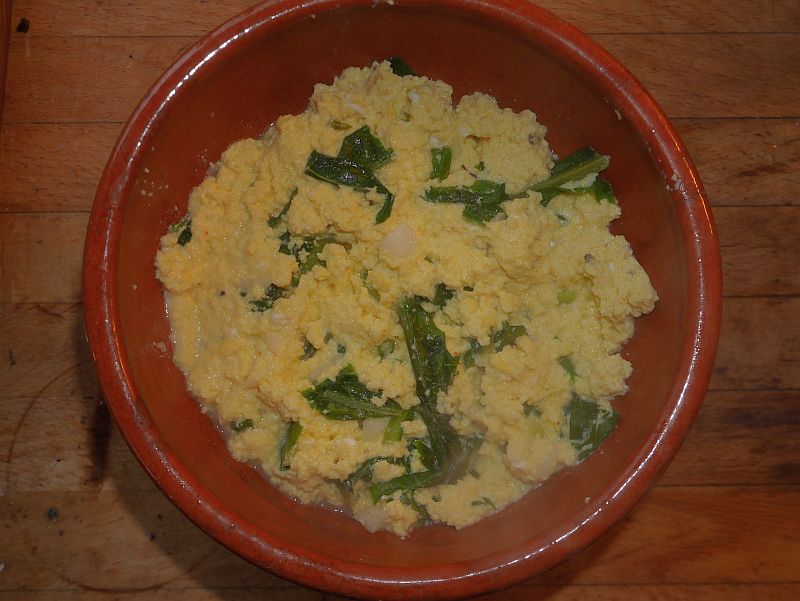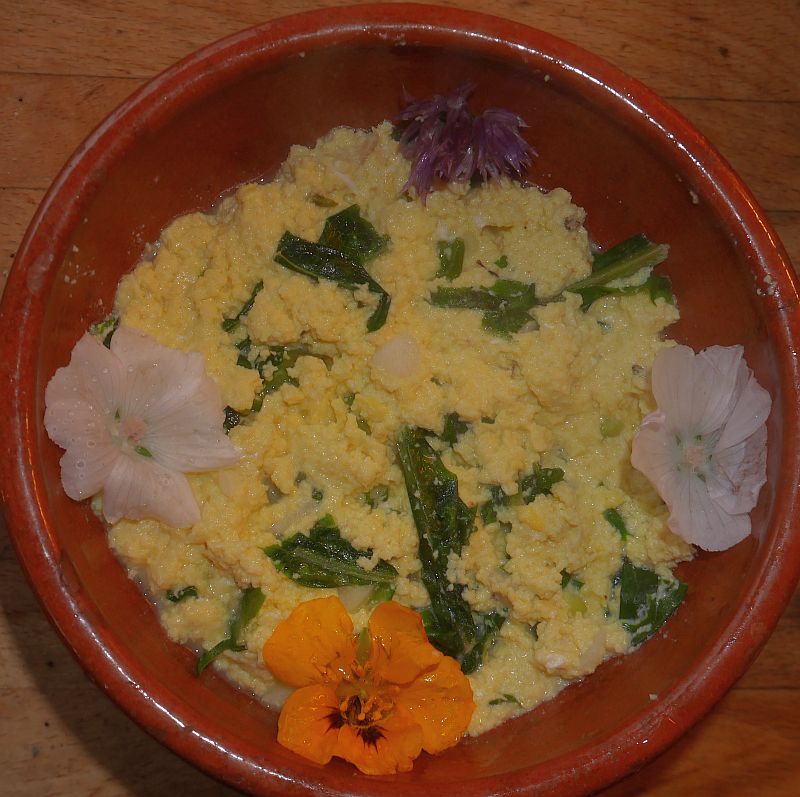In 2017, I was able to grow Sonchus kirkii, the original perennial sow thistle (puha or rauriki), an important traditional vegetable of the Maori which I’d long wanted to try. Unfortunately, I didn’t manage to overwinter it. It grows in coastal New Zealand and isn’t adapted to freezing winter temperatures and no doubt stays green all winter. I had been hoping to overwinter it and try the spring shoots, but I didn’t get the opportunity then. I relocated the original seed packet this spring, and the seed was still viable and the plants started flowering now in October and with unusually mild weather so far this winter with no serious frosts, I finally got round to trying some of the top growth in the tradional way to eat Sonchus oleraceus in Mediterranean countries, fried with garlic and chili in olive oil and added to scrambled eggs. The raw leaf was surprisingly mild, much milder than perennial Sonchus arvensis, which I’ve experienced as unpleasantly bitter in the past (young shoots in spring).
There is an account in my book Around the World in 80 plants of this species and annual super(healthy)weed Sonchus oleraceus which replaced it in Maori kitchens! Variously known as puha, shore puha or New Zealand sow thistle (syn. Sonchus asper var. littoralis), its habitat is described by the New Zealand Plant Conservation Network as http://www.nzpcn.org.nz/flora_details.aspx?ID=205: “Coastal. Usually on cliff faces in or around damp seepages where it often grows with the blue green alga Nostoc and fern Blechnum blechnoides. This species has a distinct preference for base rich rocks such as basalt, calcareous mudstones, siltstones, limestone or apatite-rich greywacke faces. On some offshore islands this species extends up into coastal scrub and herbfield. It occasionally grows on stabilised sand dunes. Indications are that this species once occupied a wider range of habitats but has retreated to those less suited to other faster growing introduced weeds.”
NZPCN states that it is “Easily distinguished from all the other naturalised Sonchus species by the very large, glaucous, non-spinose leaves” (this includes Sonchus arvensis – perennial sow thistle and annuals Sonchus asper and Sonchus oleraceus). The first picture shows a comparison of the autumn leaves of the two growing in my garden:

